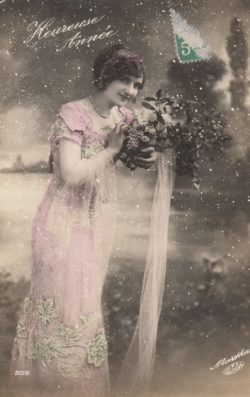Dressing up for the holidays: Spotlight on celebration outfits

It is December again, which rimes for most of us with Christmas and New Year’s Eve celebrations: occasions to finally gather again, and wear some of our most elegant outfits. On celebration days and special occasions, if our mindset might change, our way of dressing as well. And in our wardrobe, lie those suits and dresses that have been worn just once, and only wait for another opportunity to see the light. But historically, what could be the different reasons why people generally appreciate wearing elegant outfits to celebrate?
Signifiers of power

In the Middle Ages, clothing’s colours, ornaments, and shapes signified social distinction and classification. In the context of gatherings, feasts or parties, they worked as markers to be read. Subjects adorned the emblematic colours of their sovereign, and crowned heads displayed their wealth by their outfit. Power and wealth were to be shown by luxury pieces of clothing — with fur or expensive and refine materials and details —. Wealth was also asserted by the layering of clothes, as a manifestation of great possession. This layering was enhanced by slits and openings that would reveal the different layers. And already back then, unlike lower classes’, elite’s celebration times were the greatest occasions to show new experimentations and creativity, as there, the elites could afford the most expensive and extravagant kinds of clothing. Therefor, if celebrations were a place of power demonstration, they were also where new trends and innovations were to be spotted and passed on.
Silent cries for consideration
As centuries went by, festivities were still places to perform social and political functions. But in the 19th century, different power dynamics were at play. In France for instance, a larger freedom to blur social boundaries prevailed, because monarchial power was taken down, and one’s possibility to wear expensive pieces of clothing reserved to the elite, since then only rely on their fortunes. And one could dress according to the social class he or she belonged to, or was willing to belong to. However, the set of sartorial codes to become part of the mondaine scene was no less stricter, and it placed imitation more than extravagance and personality on the foreground. For each context — whether it was an evening out at the opera, a diner or a gala — different clothing requirements were to be followed, whose shapes and patterns evolved throughout the century. And when a woman could not afford more than one outfit to be worn for various occasions, she could purchase a transformation dress, that consisted of a same skirt that matched two or more different kinds of tops — most of the time with different clivages.


Such drive to purchase luxury items merely in order to be socially recognised, are addressed in “The Necklace” —“La Parure” in French — a novel written by the French writer Guy de Maupassant, and first published in 1884. Through the fictional story of the main character Mathilde Loisel, Maupassant sketches first her ambitions to overcome her social consideration, and later on, the financial struggles she encounters because of a necklace that will eventually lead to her demise.
Manifestations of superstition
In the 20th century and nowadays, dressing up for special occasions is a more than widespread behaviour, and it crosses all social distinctions. Whether it merely is wearing high heels, a white shirt or a very expensive gala dress, on such nights, one often goes for an outfit that — slightly or drastically — differs from daily and casual clothing. And everyone plays that game within their own means.
New Year’s Eve is a good example of a moment when one generally puts effort in their look. In such occasion, it could appear as a symbolic and even superstitious act. As a passage from one year to another, it seems important and meaningful to show oneself in their best light to enter a new cycle. New Year’s Eve is often a night where everything is possible, and that leaves room for wearing extreme, uncomfortable, precious and/or luxurious pieces of clothing to mark that day as special. Thus, to some extent, it also manifests the possibility to stick out of one’s social class and to pretend to be someone else for a day or night. Such conceptualisation of the self is also relevant in costume parties, very common to celebrate New Year’s Eve.
On wearing something new
New Year’s Eve preparation often goes along with shopping and putting money into a new outfit. New trends and items flood shops and malls, and one is often pressured to consume. Dressing elegantly with celebration outfits is a large sales pitch that justifies yearly trends and high prices for fancy items. At a time of a prevailing fast fashion, it merely resumes in another symbolic pretext for purchasing new clothes, sometimes exceeding one’s budget. As these special outfits are still markers of social ranking, in which branding plays an important role, pieces of clothing aren’t only considered for what they appear like but also for the creator who designed them — and sometimes even for their price. Throughout all those examples, it appears that more than ever, party dressing embodies both personal and collective symbols — just like in the Middles Ages.










